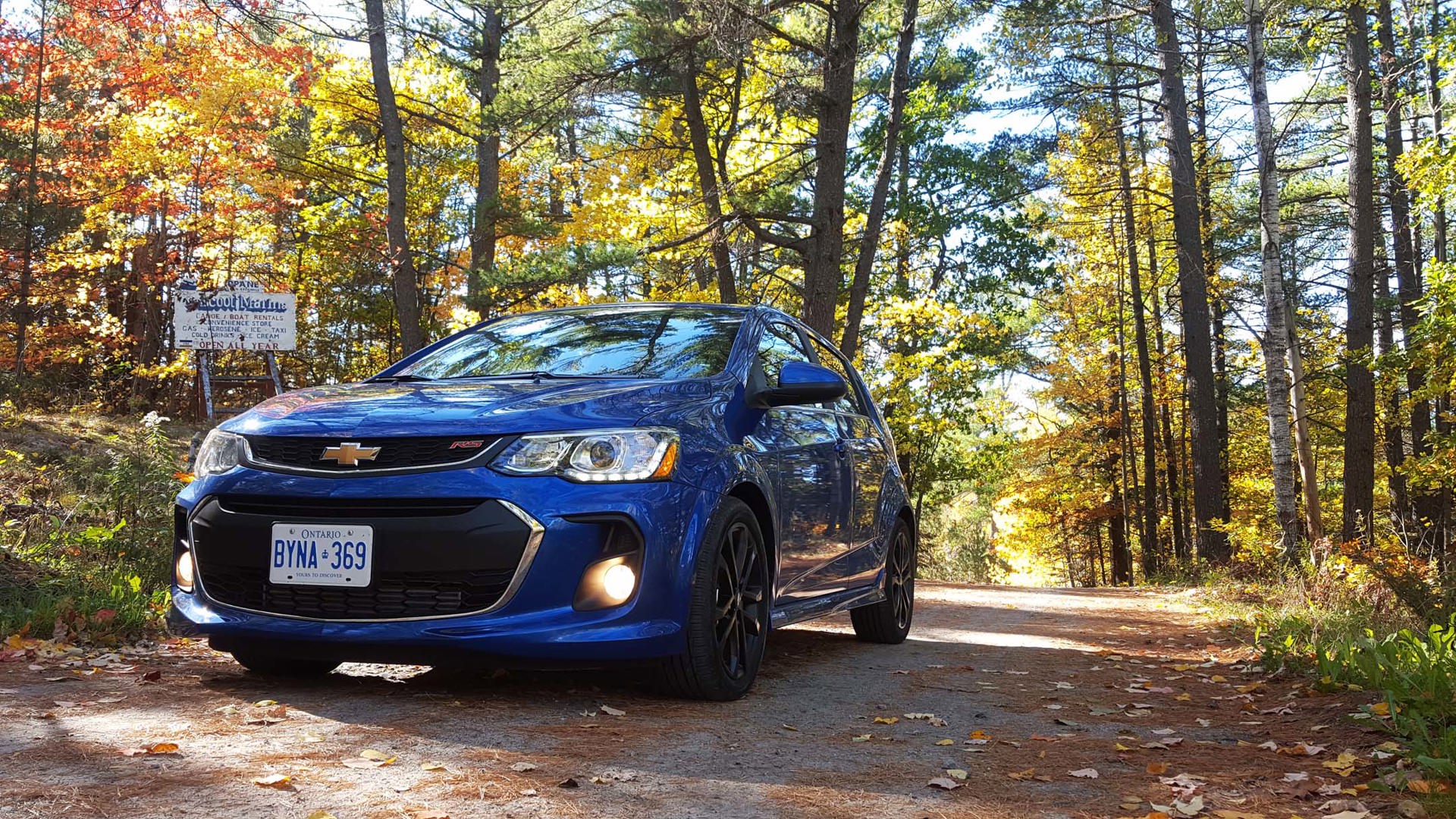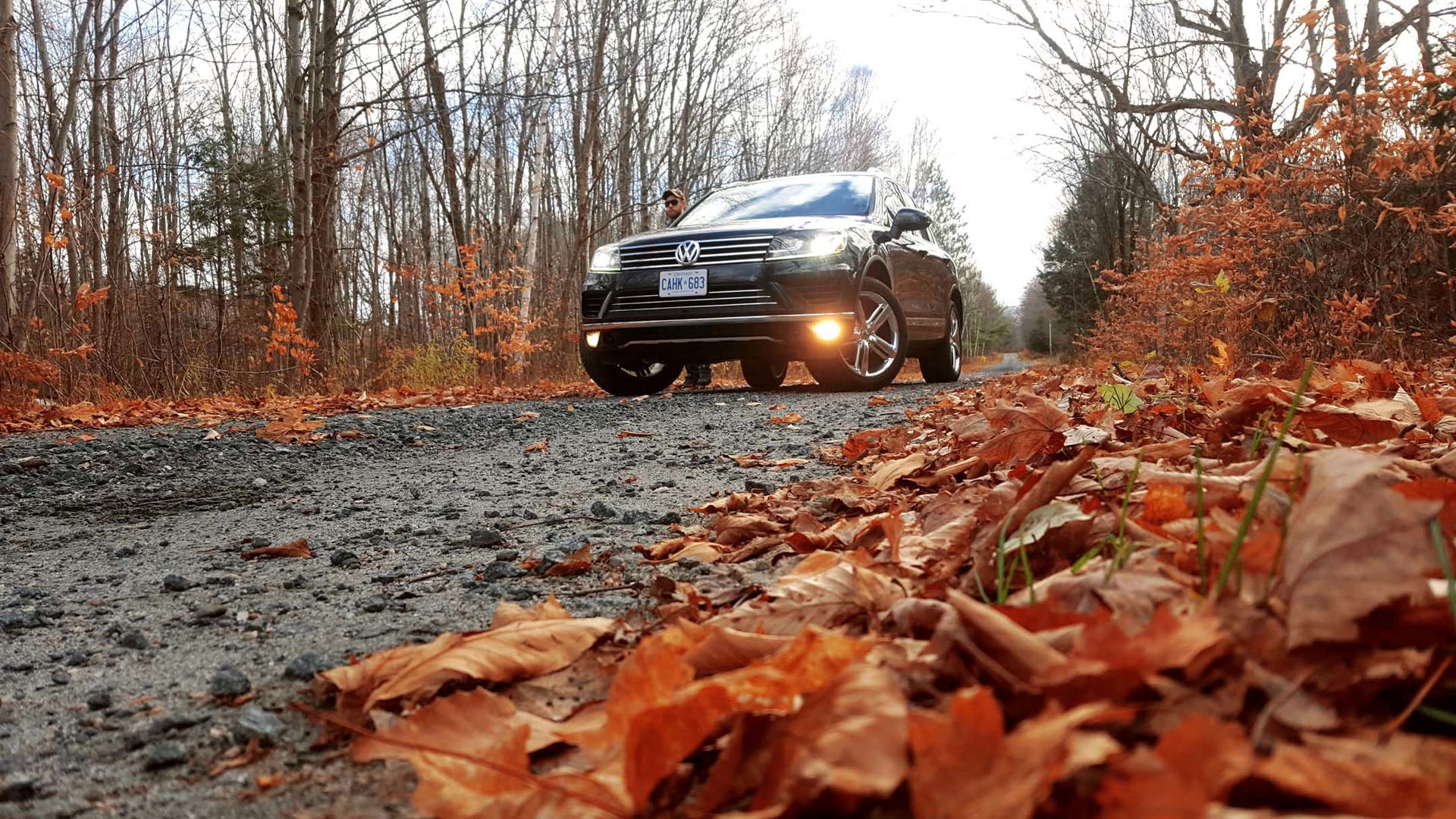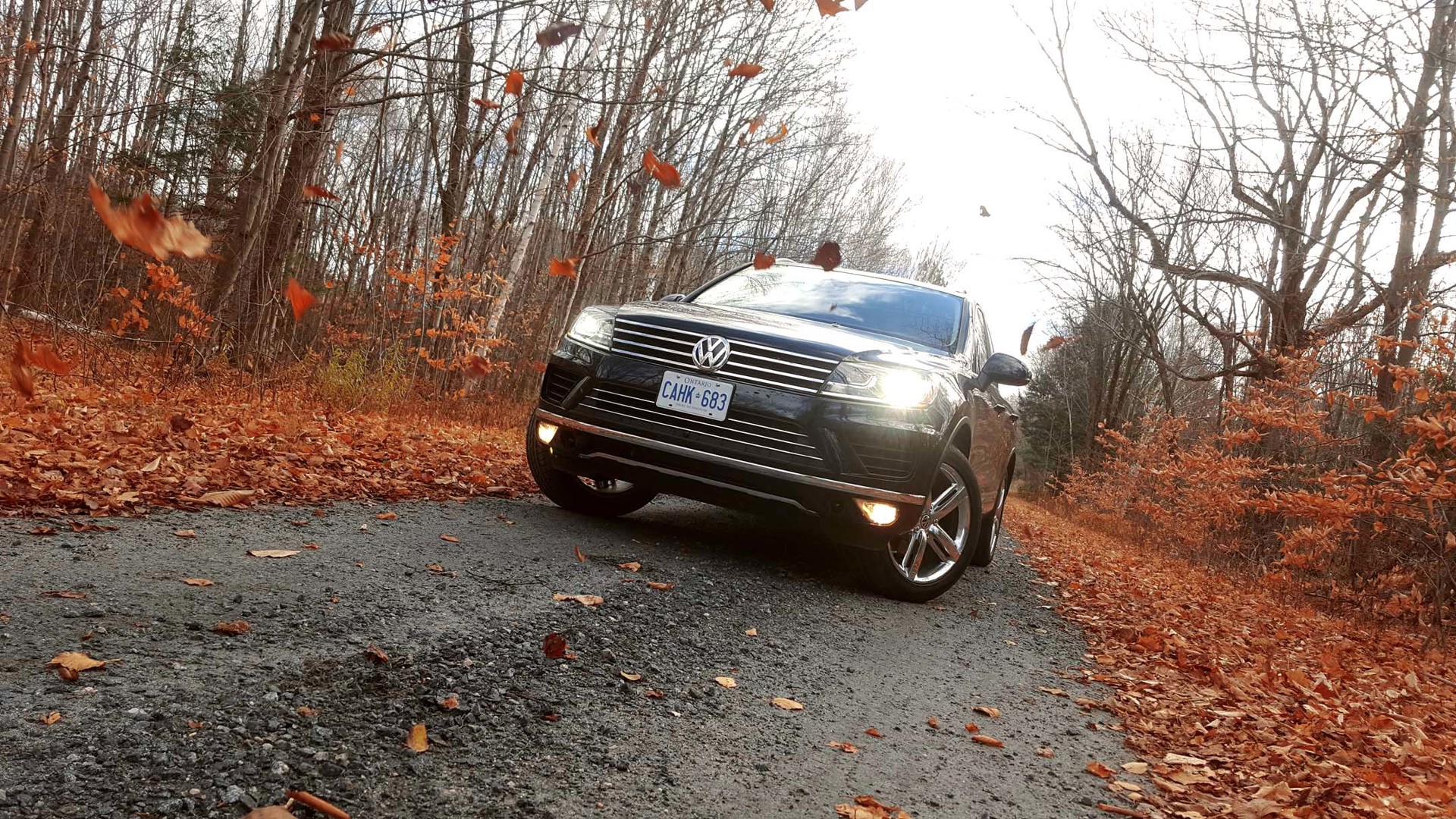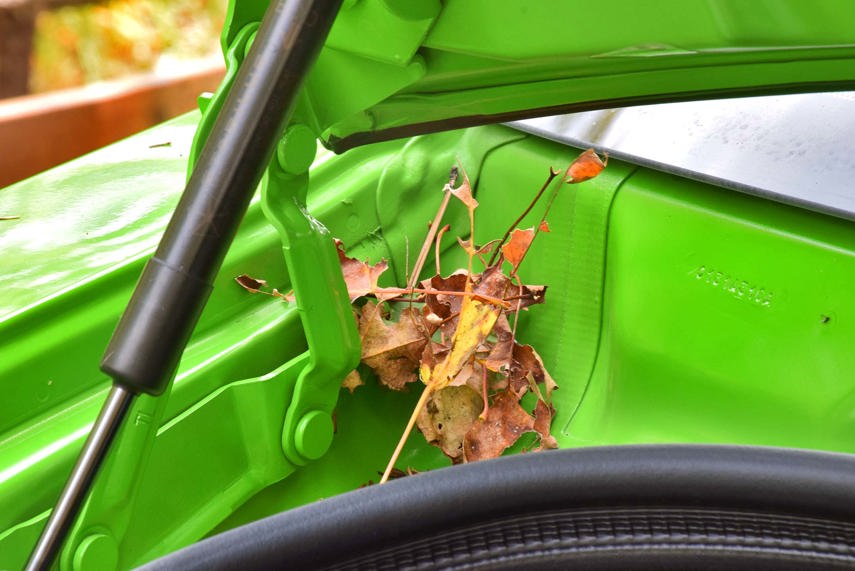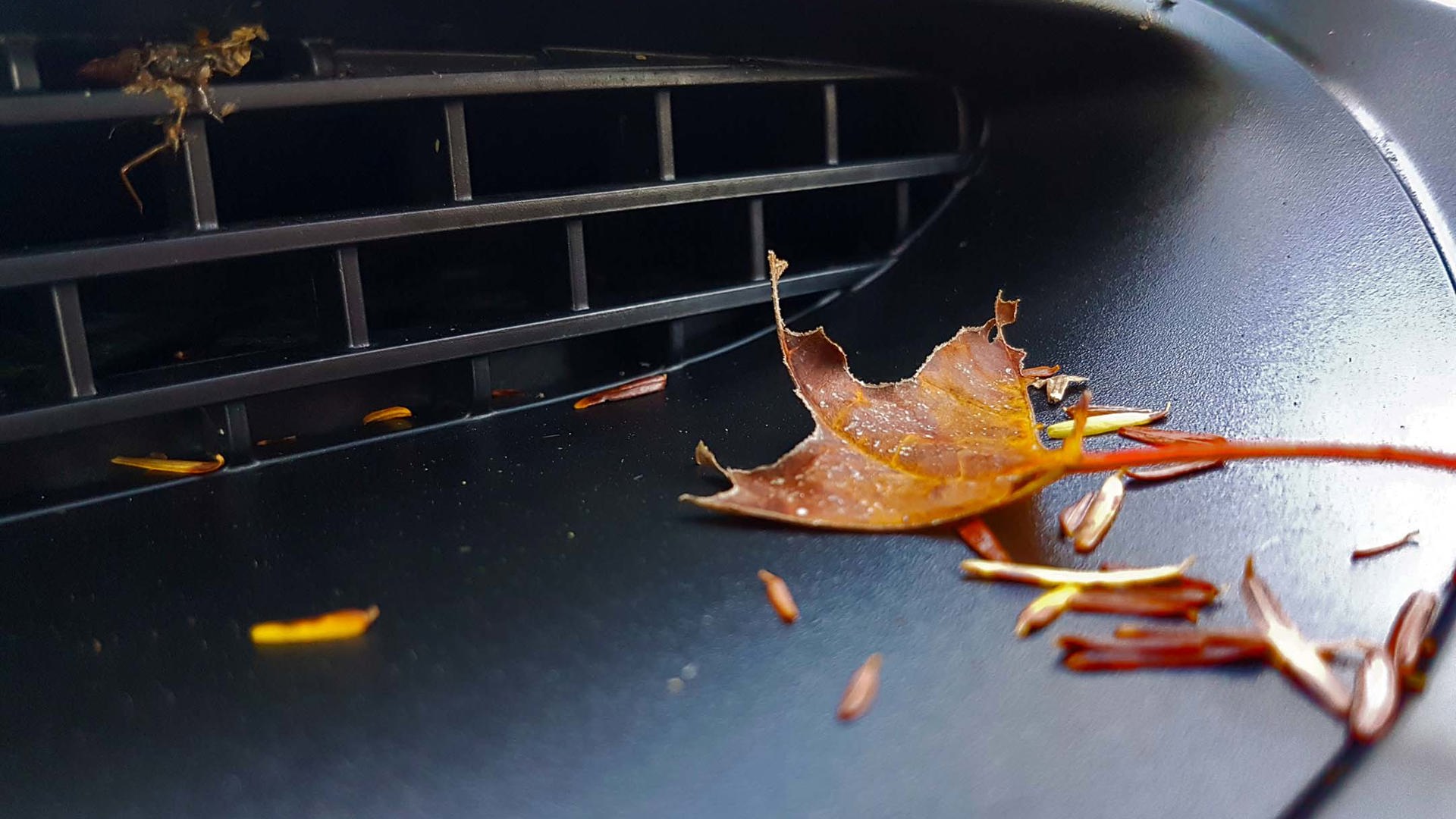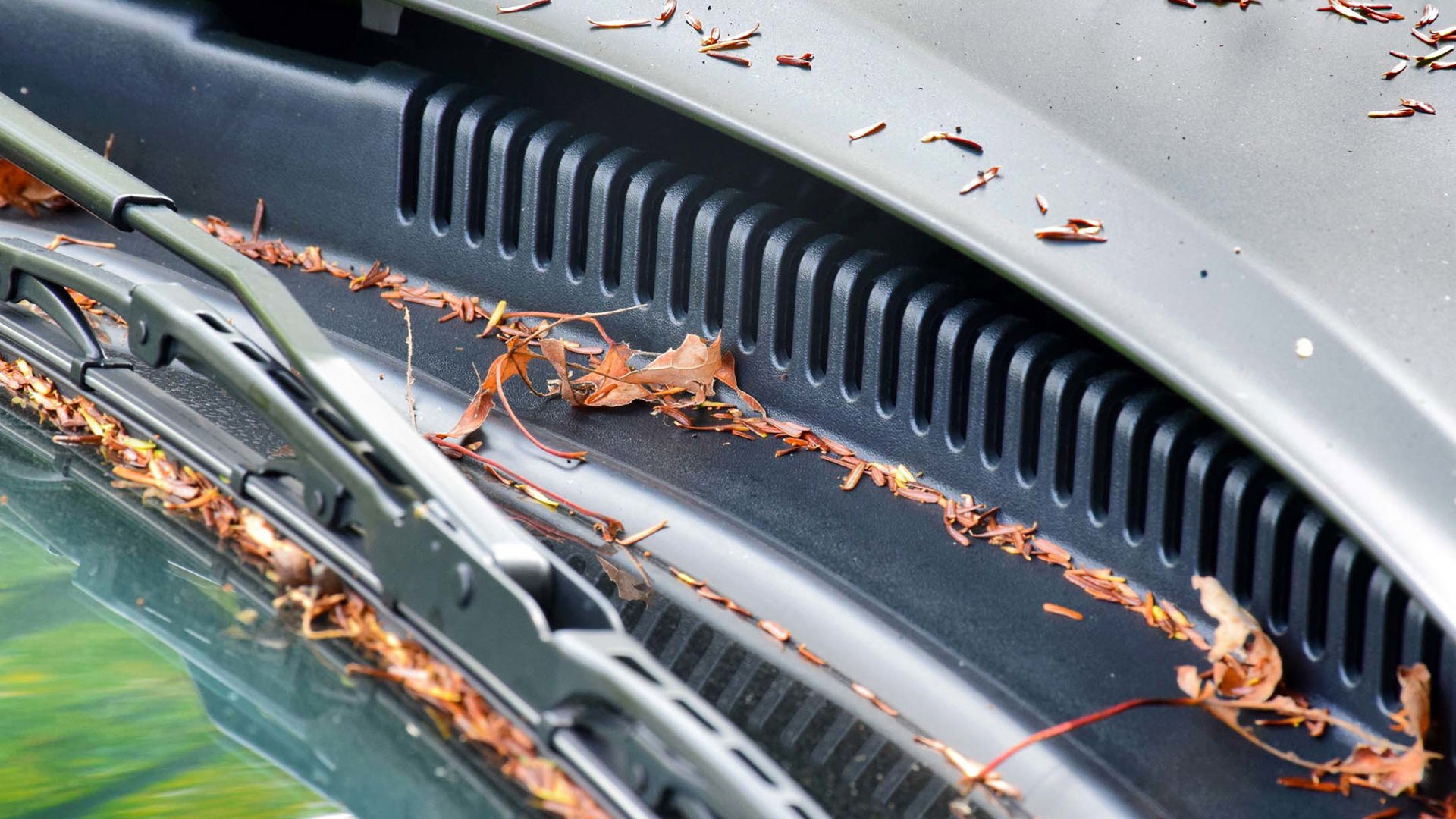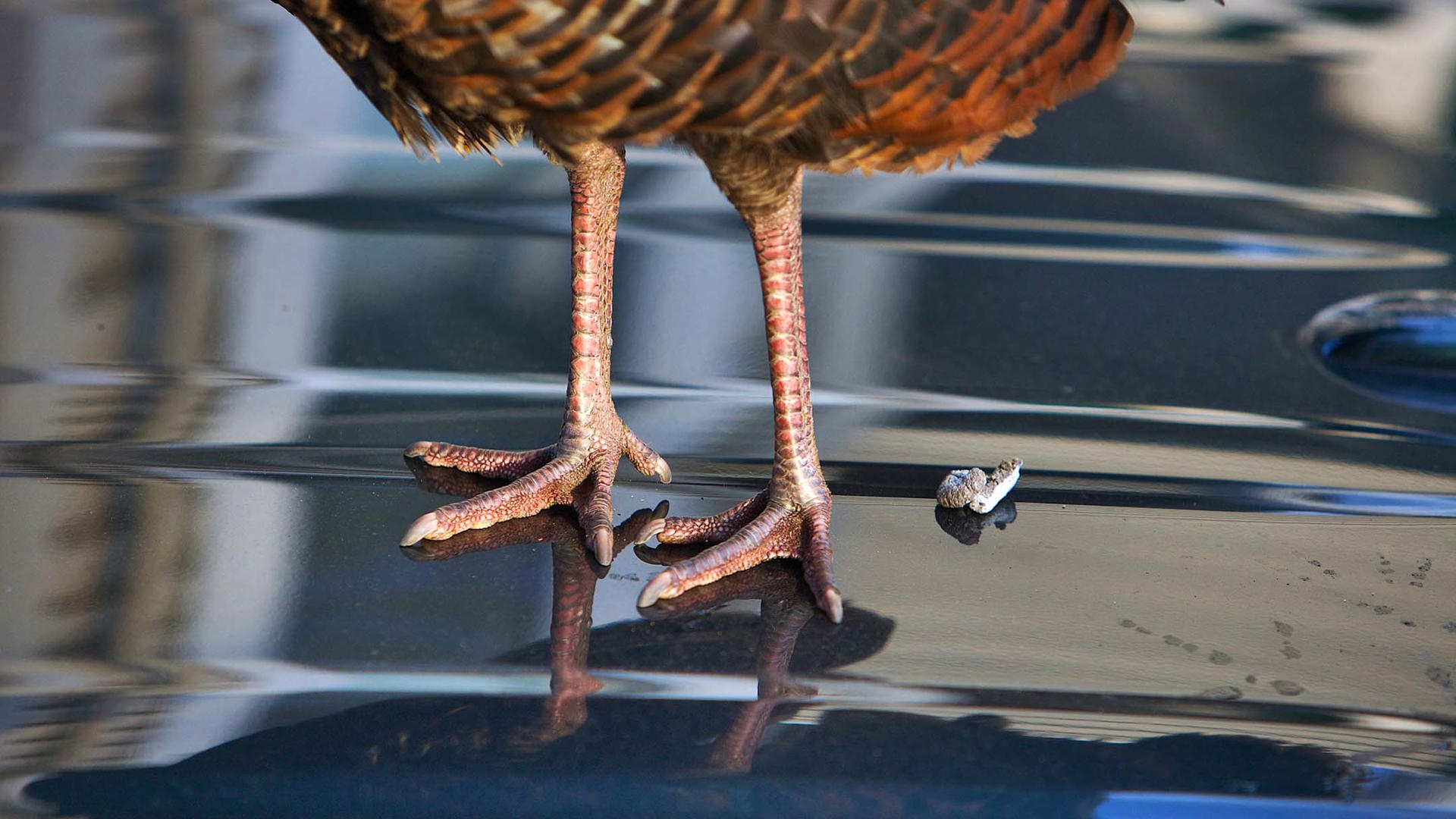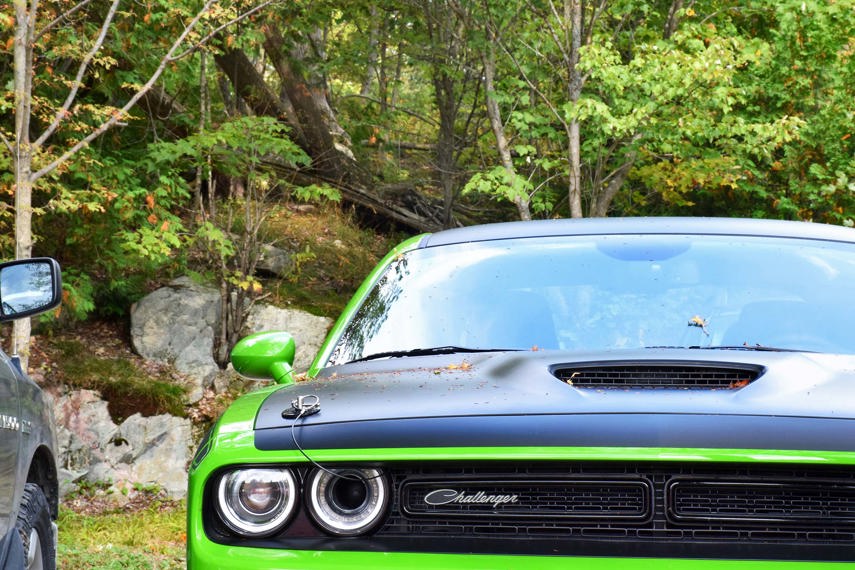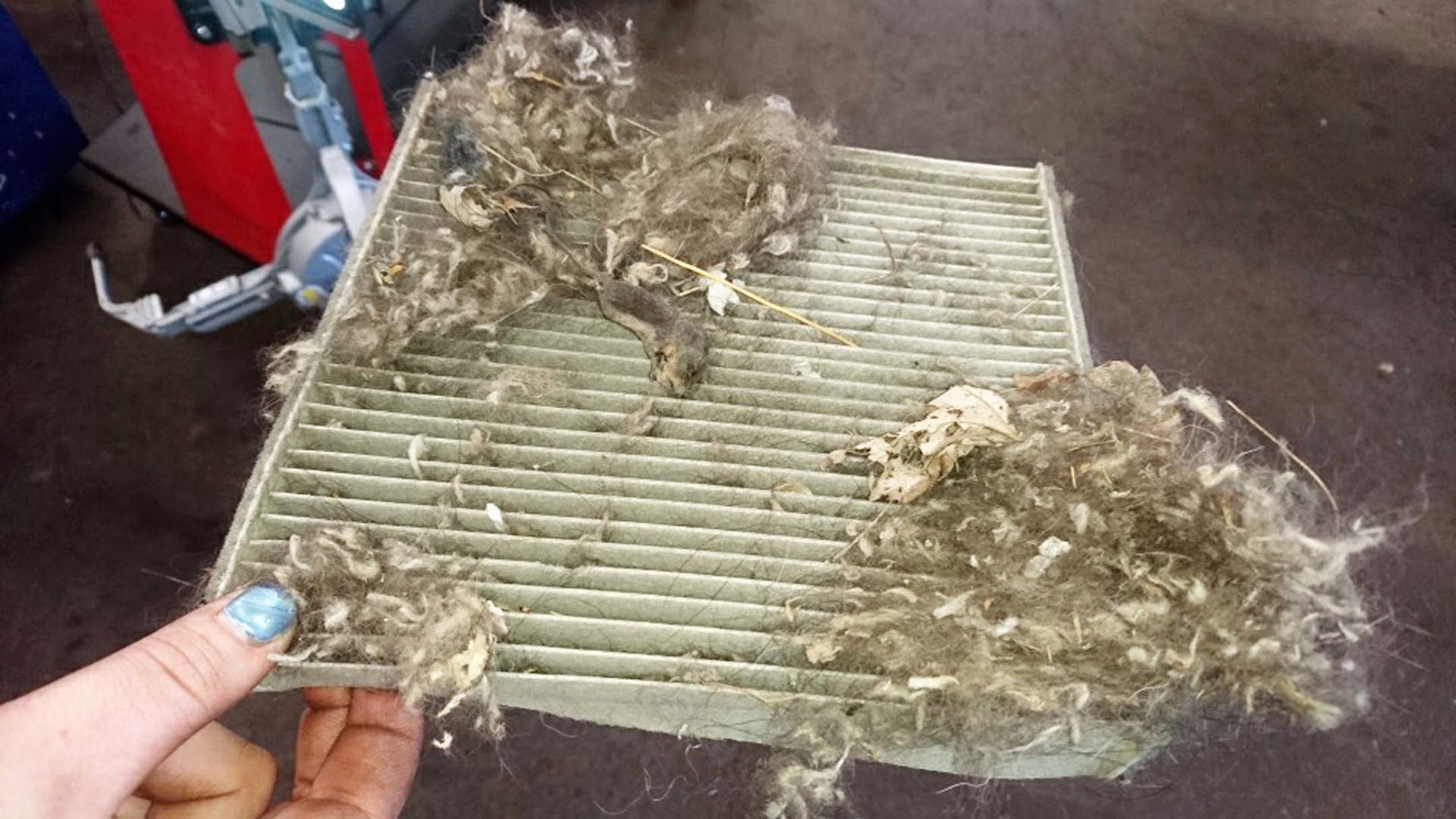In much of Canada, autumn is beautiful to look at – but this most reddish-orange (or orangey-red?) of seasons comes with a unique set of hazards that can hurt, damage and otherwise wear away at your ride if left unchecked. Below, we’ll look at the four special ways that fall can cause car-related headaches, and what you can do about them.
Leaves / Tree Debris
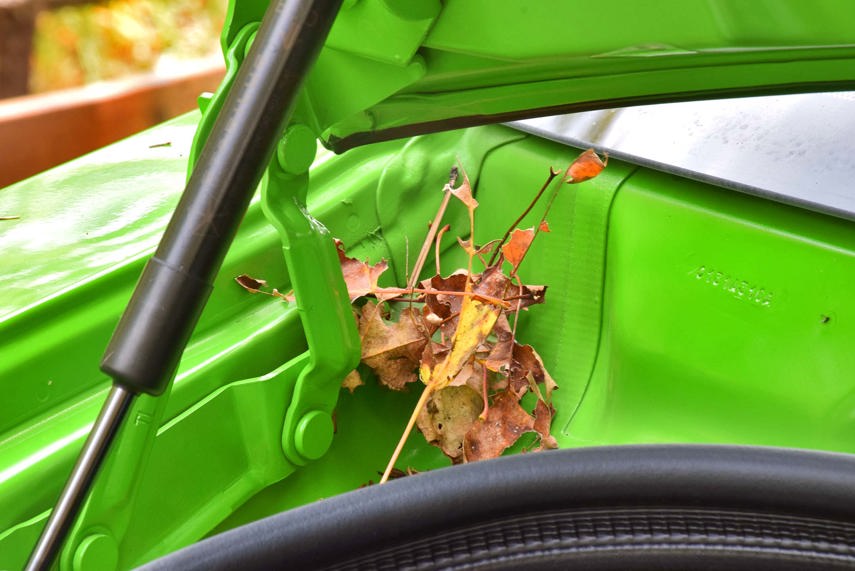
Potential Problems
Trees are wonderful – but they’re full of not-so-wonderful stuff that can cause issues with your ride. Bits of sticks, branches, pinecones, needles, seed-casings and the like can all find their way onto, or into, your vehicle – as can crispy dead leaves, in their entirety, or in pieces. Any of the above can scratch your ride’s paint, block its climate-control air intake, clog your cabin or engine air filter, or even build up under your hood or inside of door-jams, where more problems can result.
Left unchecked, accumulations of tree debris can invite insects and other creatures to take up residence in your ride, trap moisture against its metal body which accelerates rust, and may even become a fire hazard. Tree debris can quickly block body drain tubes, which can result in water leaks into your ride’s cabin. It can also scratch, discolor and damage your paint.
Defense Plan
This one’s simple – just check your ride, inside and out, for unwanted debris. If pine needles, leaf-bits and stick-bits are building up in the area at the lower edge of your windshield, in the outer edges beneath your hood, anywhere in your engine bay, or in or around the sunroof, be sure to clear them away quickly. Look through your ride’s grille, inspecting the radiator and air conditioning condenser for signs of foliage-based blockages, too. If any are detected, be sure to clear them away. Finally, open each front door and look ahead of the hinges, for unwanted buildup inside of your fenders.
Remember – smaller bits of dead tree matter can quickly work their way into your rides air filters, which include its cabin air filter, and engine air filter. So, once the leaves have finished falling, a quick check of these filters is highly advisable. Finally, remember that allowing your climate control air intake (which usually sits at the lower edge of the windshield) or air conditioning condenser to become clogged will drastically reduce defogger performance when the cold weather hits.
Poop From Migrating Birds
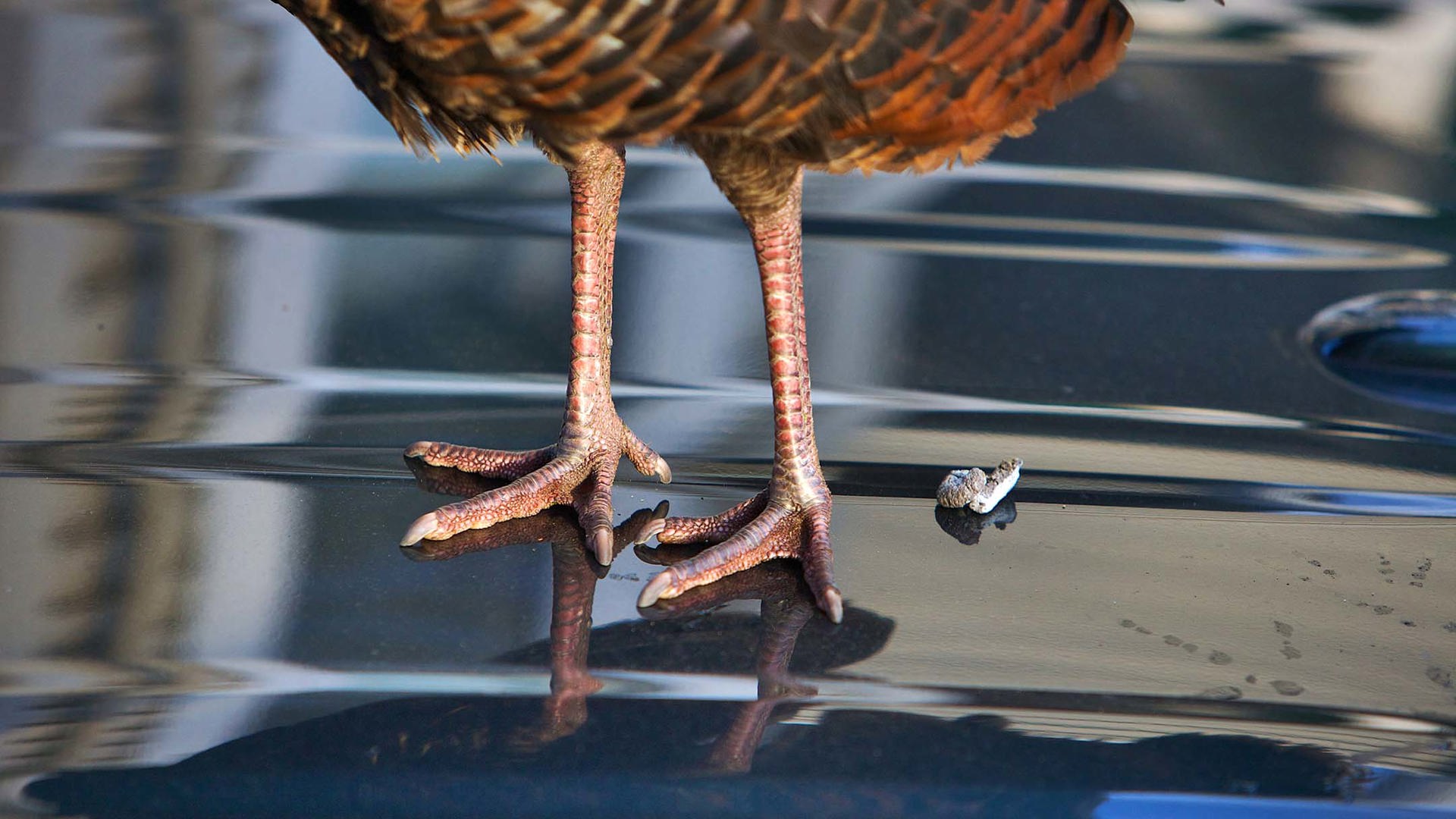
Potential Problems
This time of year, birds are overeating and flying south to spend winter somewhere warm. This means that more birds are flying overhead than usual, and that they’re more poop-filled than usual, too.
Bird poop is bad for your ride’s paint, but not as bad for your ride’s paint as the way that most people try to clean it off. Here’s the very important thing to know about bird poop: it dries like glue, likely contains sand, pebbles, seeds, nuts and other gravelly stuff, and is fairly acidic.
Defense Plan
If you discover that a bird has nuked your Rio, Acadia or A4 from orbit, your first step is to be patient – and even moreso if the poop is dried on.
If a bird craps on your car, here’s how not to clean it off:
- Grab an old rag and some cleaner
- Spray cleaner on the poop and start rubbing
- Become frustrated that the poop isn’t coming off, and start rubbing harder
- Apply more spray, and more rubbing
- Curse vigorously as you rub even harder
- Discover that your paint and clearcoat are now permanently scratched
- Curse even more vigorously
Instead, liberally apply an appropriate cleaner to the poop. Then, go have an adult beverage, watch an episode of Game of Thrones, or mow the lawn. Return to the poop a while later, and very gently attempt to rub it with a soft cloth, to see if it’s been loosened. If it hasn’t, apply some more cleaner, and wait longer. Once you determine that the poop is loosened up or broken down, wipe it away, in one direction, as gently as possible. DO NOT SCRUB.
Tree Sap
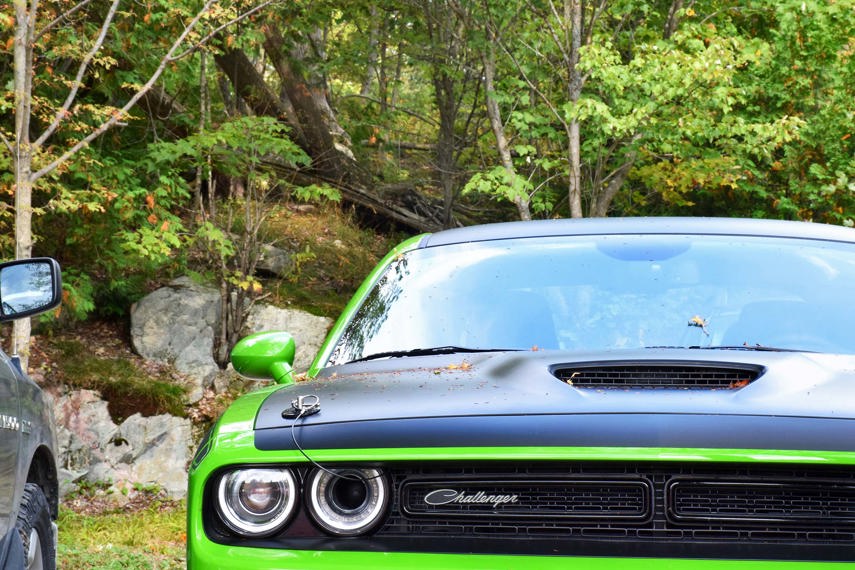
Potential Problems
Tree sap is sticky, hard to remove, and can smear, stain and otherwise muck up your paint if left unattended. If it sneaks its way onto your windshield, it’ll probably smear and block your vision, too. Worst of all, it can be very difficult to remove with regular car wash soap. Since it’s sticky, sap drops can also allow gritty dust and dirt to stick to it, increasing the likelihood of permanent scratching during removal.
Defense Plan
Assuming it’s impractical to park indoors, to cover your car, or to park somewhere where sap won’t land on it, you’ll want to use a dedicated sap (or “Bug and Tar”) remover, which contains special solvents designed to break the sap down. You’re best to use a product designed for the job, as it cuts down on excessive rubbing and scrubbing, which is bad for your paint. Follow the instructions on the product, and consider allowing the product it to rest on the sap a moment or two before you try to wipe it off. Use caution, remembering that the sap may have abrasive dirt or particles stuck to it. Also, remember not to use your wipers if there’s sap on your windshield – it’ll smear all over the place, stick to your wiper blades, and make a big old mess.
Hibernating Rodents
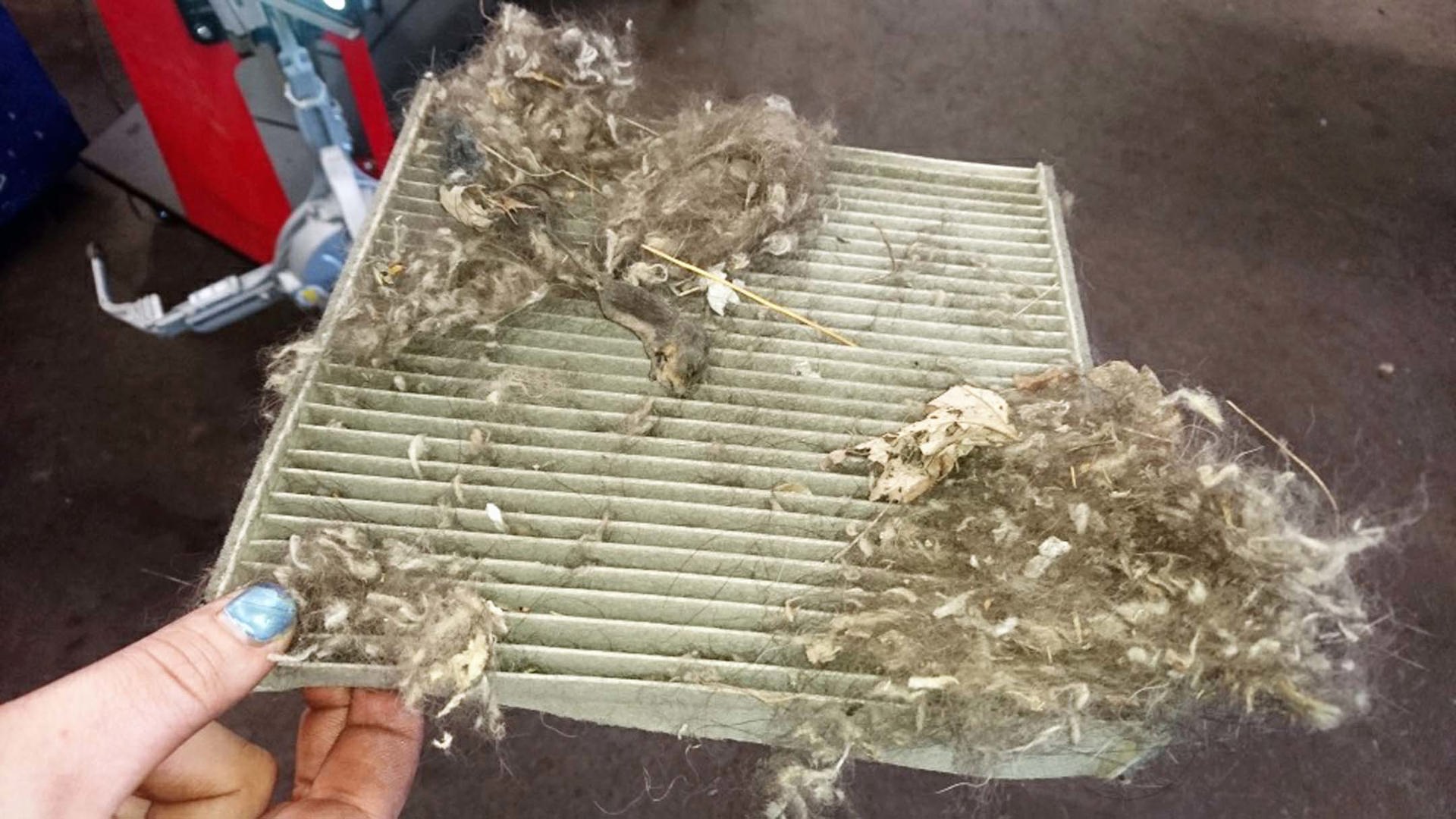
Potential Problems
Rodents are small little things that can cause big problems with your ride. This time of year, squirrels, mice, rats, chipmunks, voles, and even moles are all looking to fatten up and find a cozy place to spend winter – and your ride might be an appealing place to do it.
These little whiskery creatures can chew into your upholstery, bring flammable and fluffy bedding into your (hot) engine compartment, eat through vacuum lines, block climate control passageways and air filters, and even pee, poo, or die inside of your vehicle, with smelly results. God help you if a rodent decides to munch on the wiring in your modern vehicle, or if one runs across your mother’s lap while she’s driving.
Defense Plan
Best defense? Make your ride, and its surroundings, less attractive to rodents. First, keep your vehicle and its surroundings clean. Those granola-bar crumbs, cheerios, and that half-eaten bag of trail mix you keep in your glove-box are all begging to be snacked upon by mice, some of which can smell the food from hundreds of feet away. That bag of bird seed you keep in the garage, combined with an engine compartment that stays warm for hours after you turn your Camry off, are an enticing combination for winter rodent residence, too.
Translation? Don’t keep things that rodents like in your car, or anywhere near it. Clean up litter, and especially paper, too – remembering that napkin shreds make great rodent bedding.
Next, inspect your climate control intake, engine air filter compartment, and engine intake and exhaust manifolds, as well as all other under-the-hood nooks and crannies, for signs of rodent nest construction. If you’re certain a rodent is living in your vehicle, and you don’t like sharing, try a mousetrap.
Finally, note that various deterrent products may help. These may include electronic devices that make sounds rodents don’t like, or cartridges or packages of material that have a smell rodents don’t like, which can help ensure they look elsewhere for winter accommodations. Or, if you’re really brave – keep a pet snake in the car.
